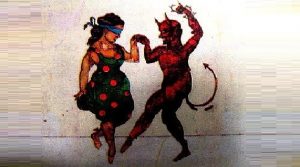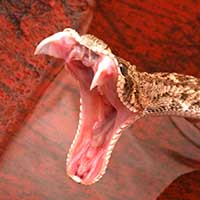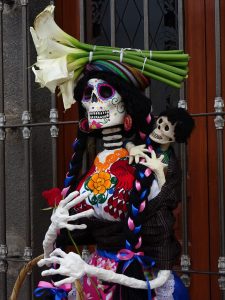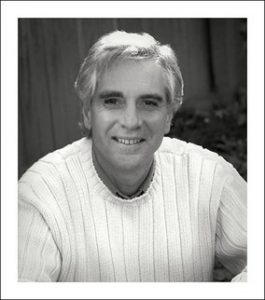 I know John online through a Facebook friend, a fellow author who lives in New Mexico, where John has been working on a photography project. His work intrigues me, so I wanted to ask him more questions about his work, and here we are! Enjoy learning about this fantastic fine art photographer and his projects, outlook on his art, and his artistic process. I’m pleased to share him and his photographs. Please go to his website for a more extensive gallery and contact him for purchase. Links to website and social media follow the interview.
I know John online through a Facebook friend, a fellow author who lives in New Mexico, where John has been working on a photography project. His work intrigues me, so I wanted to ask him more questions about his work, and here we are! Enjoy learning about this fantastic fine art photographer and his projects, outlook on his art, and his artistic process. I’m pleased to share him and his photographs. Please go to his website for a more extensive gallery and contact him for purchase. Links to website and social media follow the interview.
Describe your artistic process: choosing subject matter; determining projects; inspirations; and the nitty-gritty of taking photos—location, timing, angle, light, etc.
I am a Fine Art Photographer. This gives me the freedom to pursue projects that appeal to me without commercial pressures. The downside is that I have had to look elsewhere to make a living. This is not a complaint, but a choice. Over the years, I’ve worked in public relations, marketing, fund raising, and real estate – all of which I have enjoyed thoroughly.
I don’t really choose projects. They seem to choose me. In fact, I don’t really think there is any rhyme or reason as to why I take on a project. The only connecting theme that comes to mind is my curiosity with “place” and how “place” relates to culture.
Perhaps I’m best known for my Adobe Church Project. During my first visit to New Mexico some 15 years ago, I was taken by the absolute beauty of these simple structures, the history they represent, and the important role they play for the communities they serve. I’ve never looked back.
Tea staining these photographs, first in the darkroom, and later replicating this result in Photoshop, is my way of commenting on the connection between the buildings and the natural material from which they are constructed.

Riding the Rails is a project that came about by happenstance. Returning home on a commuter train from Philadelphia, I happened to make a photograph of a scene that caught my eye while looking out the window. The train was moving quite fast, and upon inspecting the resulting print, I was fascinated by the sense of motion—the way colors melted into one another. This inspired me to photograph this project in color, rather than my usual black-and-white.
Bicycling through the back roads of Pennsylvania’s Amish Country first inspired my Amish Country Landscape project. The countryside is so quiet and open—the slow pace allows plenty of time to meet the people and to take in the landscape. Later, I would return with my camera to make photographs. As many people know, the Amish shy away from being photographed. In fact, their religion prohibits them from posing. I’ve always done my best to respect their wishes. Instead, I look to the landscape to tell their story and to celebrate their way of live.
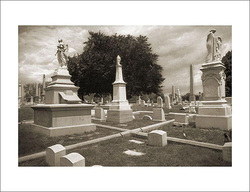
My Laurel Hill Cemetery project offers a unique window into the history of Philadelphia and its urbanization during the mid-1800s. The cemetery is a time capsule. It is not just the remains of our ancestors that are buried there, but a way of life. Designated as a National Historic Landmark, countless prominent people are buried there. While names such as Rittenhouse, Widener, and Strawbridge pique local interest, Laurel Hill also appeals to a national audience. General George Meade and 39 other Civil War generals reside there, as well six Titanic passengers.
Laurel Hill Cemetery is very much a product of the Victorian era. The monuments and garden reflect the art and architecture of those times. Who were the people who built them? What life did they pursue? I hope that my photographs conjure up these questions and make us wonder what traces we will leave behind.
I don’t really have any theories about location, timing, angle, or light. I pretty much let the subject determine these qualities. I will often photograph a subject many times using different focal length lenses, from different angles, and at different times of day. One of the advantages of “project photography” is getting to know your subject. If the light isn’t right, I’ll return when it is. This does take patience, but the results are well worth it.
Summarize the chronology of your career and its highlights—when did you “feel” that you embodied the “title” of Photographer?
This is more difficult to answer than you might think. I’ve been involved with photography for some 60 years. So, as you can imagine, there are many, many fond memories.
There is the first camera my father bought for me when I was 10 years old. I came down with the whooping cough. My dad thought a camera would cheer me up. Oh, by the way, I still have that camera.
When I was in high school, I was the photographer and photo editor for the yearbook and newspaper. This might not sound like much, but every time I was excused from class to cover an event or game, I felt like a kid playing hooky.
However, on to more serious “art” stuff, as it pertains to my career as a fine art photographer. (See answer to next question for my beginnings as an actor.). It wasn’t until 1992 that I made an effort to take my work seriously and to search opportunities to show.
1992 marked the first time my work was accepted into a juried show, and it was the first time I was awarded a prize for my work.
In 1994, I was asked to show my work in a gallery for the first time. In addition, it was the year I sold my first photograph. And 1996 I have my first showing in a New York City gallery.

1998 was the first time one of my photographs was published. “Trio” from my “White Flower” project was published in the “Antietam Review Journal of Creative Writing and Photography.”
1999 marked another first. The Woodmere Museum in Philadelphia accepted one of my photographs for its permanent collection.
The Lancaster Museum of Art invited me to participate in my first museum exhibit in 2001.
In 2002, a photograph was accepted for the annual “High and Dry” exhibition sponsored by Texas Tech University in Lubbock. This was the first time one of my photographs was accepted in a show beyond the local Philadelphia area.
2005 was the first time I received statewide recognition for my work. One of my photographs was accepted into Pennsylvania’s Annual Art of the State Exhibition. Also, 2005 was the first time I was invited to jury a photography exhibit.
Between 2006 and 2009 I participated in many shows, and I was fortunate to have my work awarded many prizes. Then, in 2010, my “San Francisco de Asís IX” photograph was awarded the Plastic Club Silver Medal. The Plastic Club is one of Philadelphia’s oldest and most prestigious art organizations. Perhaps this is the beginning of the “feeling” that I could call myself a fine art photographer.
2012 was a very good year, and the “feeling” that my work was gaining acceptance continued to grow stronger. I had a retrospective show at the Keystone Art & Culture Center in Lancaster, PA. Also, in Lancaster, one of my photographs was selected for the “Permanent Collection on Exhibit” at the Lancaster Museum of Art. In addition, Lisa Hanover, then the Director of the Philip and Muriel Berman Museum at Ursinus College, selected one of my photographs for the “Picture Making: Recent Acquisitions in Photography” exhibit.

In 2016, the Luminous Endowment for Photographers awarded my “Adobe Church Project” a grant enabling me to return to New Mexico to continue work on this project. This marks the first grant of my career. In 2017, I was a finalist for a Guggenheim Foundation Fellowship, but, unfortunately, I was not awarded a grant.
Then, in 2017, Rosemont College awarded me a solo show for my adobe church pictures. This was an amazing experience. I have worked on this project for almost 15 years, and to see the work come together in a single show was the highlight of my career to date.
For me, being a finalist for a Guggenheim Fellow and the solo show at Rosemont finally convinced me that I could truly call myself a fine art photographer.
Tell me about your support system, and explain who and what are involved in connecting you as a professional with those who would purchase your work.
I am going to combine my answer to the above question with my answer to your following question: Elaborate upon your life influencing your art/work and visa versa.
An artist cannot exist without a support system. And, hopefully, yours will begin at an early age, as did mine. Theatre and acting were my first interests. Fortunately, my parents, while hesitant, did support this early dream.
During my teen years, they introduced me to Broadway theatre, and made it possible for me to participate in local theatre productions and to study acting. From there I went on to study theatre and acting in college and graduate school.
My life has had many chapters. As a young actor, I had the support of both my parents and wife. I was fortunate to find work on stage, on TV and in films. However, there came a time to put this world aside.
The next chapter involved working with non-profit organizations. In this way, I did not completely leave the arts behind. I worked in public relations, marketing, fund raising, and special events. All of these positions made use of my photography skills.
(These business skills proved invaluable a few years down the line when I started promoting my work. No one is going to do this for you. I cannot stress enough: learn how to write a press release, learn how to put together a press kit, learn how to approach local newspaper editors, take note of who purchases your work, and learn how to be professional when approaching a gallery director.)
In this small way, I never put down my camera. And, eventually I began to show my personal work. Over the years, I developed associations with local visual arts organizations.
My advancement into the world of the visual arts would not have been possible without the support of these groups. They organized shows for members, provide opportunities to learn about other media, networking, and professional career counseling.
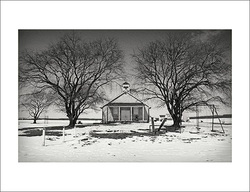
Networking was especially important to me. For example, it led to a friendship with fellow artist, Don Patterson. Don introduced me to bicycling through Lancaster County, which lead to my first real photographic project—Amish Country Landscapes.
Over time, the exposure these groups provided led to recognition for and interest in my work.
Again, I must return to the importance of family—this can be blood relations, relations by marriage, or, even, a close-knit group of friends. All I can say is that without the support of my wife, I wouldn’t have lasted in the non-profit world as long as I did. Not only did her income far exceed mine during these years, but she has always been my biggest booster.
While I might hang back, she never did when it came to telling anyone who would listen about my work and accomplishments.
Unfortunately, the non-profit world did not provide the economic stability I needed to continue my personal work. So, I moved on to the next chapter.
This led me to a career in private sector public relations, and, eventually, to real estate sales. Real estate may seem an unlikely path for a fine art photographer, but the opposite proved to be true.
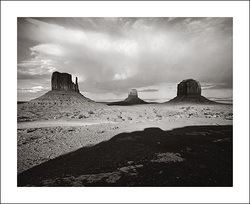
Real estate is not a nine-to-five desk job. You may have a breakfast appointment and another later in the evening. However, if you manage your time well, there is “free” time for the pursuit of personal projects—photography and volunteer work with arts organizations. And the income made it possible for me to travel to locations to work on projects and to purchase needed equipment.
Most important, the income gave me the freedom to concentrate on developing my career as a fine art photographer. It meant that I could work on projects important to me.
This was the key. My passion for my subject matter began to show in my work. Potential clients saw and appreciated my commitment, which, of course, translated into sales. But more important to me, my work gained greater acceptance within the fine art community, leading to several awards, and eventually a grant from the Luminous Endowment for Photographers.
Before moving on to the next question, I must comment on social media. It’s essential for today’s artist. Yes, it takes a lot of time, and I fully agree with everyone who dislikes the endless nonsense on Facebook. But, using sites such as Facebook, Instagram, and Flickr, I have developed relations that lead to sales, exhibit opportunities, and, more important, good friendships with people such as yourself, Lael.
Research is another important component of social media. For example, I’ve development friendships with many artists from New Mexico. Living in Philadelphia, this has proved invaluable. I am most appreciative of their willingness to share information about adobe churches, and to suggest churches that I simply don’t know anything about. It would take me weeks of endless driving through unknown territory to find out a small portion of their local knowledge.
What do you love most about your creativity?
I think the most delightful part of being an artist is that it keeps you in touch with your inner child.
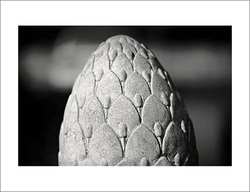
Back many years ago when I was learning how to develop film, that magic moment when an image would appear on a blank piece of white paper never ceased to amaze me. Yes, it’s chemistry, but there is a charm and sense of accomplishment to it akin to what a child must feel when conquering a new experience.
Fortunately, I have never lost this excitement. Even in today’s digital world, there is a sense of youthful pride that comes from seeing the final image appear as you envisioned it. And, this sense of accomplishment grows exponentially from seeing my work exhibited and appreciated by others.
I don’t mean just people buying my art (of course, this is important), but their genuine appreciation puts a bounce to my step.
Travel is, perhaps, the second most important component of my life as an artist. It’s not simply visiting distant locations, but it’s the people you meet along the way.
For example, most of the adobe churches in New Mexico are in extremely remote locations. Even so, inevitably, someone will appear out of nowhere and want to know what you’re doing and why you’re doing it. Sometimes they will chase you away, but I’ve always found that if you are genuine with them, they will listen, and, then tell you their story—and, in most cases, it’s much more interesting than anything I have to say.
They will tell of their childhood memories attending the church, of their friends, their parents, and even suggest churches that I might want to photograph.
Yes, when you come right down to it, fine art is a “belly to belly” business.
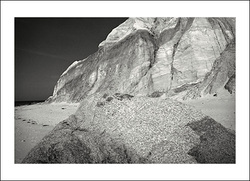
Links:
John Benigno website
John Benigno Flickr
John Benigno Instagram
Application to Luminous Endowment
Final report to Luminous Endowment
John Benigno Facebook
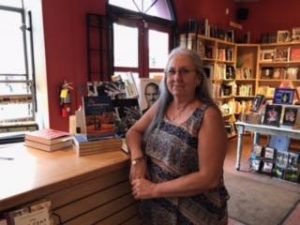 I met Carmen Baca in the Facebook group
I met Carmen Baca in the Facebook group 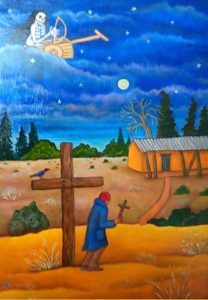 anuscripts in print, and when I’ve written sufficiently to have a couple of pages on my iPad, I revert to keyboarding since I can type (keyboard) so much faster than I write. My short pieces I do completely on my iPad before submission.”
anuscripts in print, and when I’ve written sufficiently to have a couple of pages on my iPad, I revert to keyboarding since I can type (keyboard) so much faster than I write. My short pieces I do completely on my iPad before submission.” After my father passed, we cleaned out the morada, the prayer house, and since I was the only one living in our little valley, the community members (all way older than I at the time) elected me to house the religious artifacts left behind from the brotherhood, as all the brothers had passed by that time. There was a wooden box I remembered had been in the morada throughout my childhood, but since it was always locked I never knew what was inside. One element of los Hermanos’ practices, which is sensationalized in the websites and in other literary works, is their devotion to Christ, which includes self-flagellation. My father never once disclosed whether he did this or not, and my only clue that he did was once when I was with him at a doctor visit. When the doctor exclaimed, “What happened to your back,” I knew.
After my father passed, we cleaned out the morada, the prayer house, and since I was the only one living in our little valley, the community members (all way older than I at the time) elected me to house the religious artifacts left behind from the brotherhood, as all the brothers had passed by that time. There was a wooden box I remembered had been in the morada throughout my childhood, but since it was always locked I never knew what was inside. One element of los Hermanos’ practices, which is sensationalized in the websites and in other literary works, is their devotion to Christ, which includes self-flagellation. My father never once disclosed whether he did this or not, and my only clue that he did was once when I was with him at a doctor visit. When the doctor exclaimed, “What happened to your back,” I knew.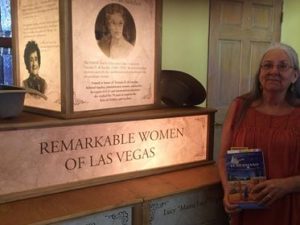 “Now that I’ve got my novel and several short pieces published, writing has given me a purpose, a new career as a story teller in my twilight years. All those decades I spent teaching the classics—short stories, poetry, novels, etc., by my own favorite authors—I am free to create my own literary works which other teachers can use in their own classes. That floors me! To know that my own literature will be taught in English, Spanish, Chicano Studies, and history courses in the same way I used to teach literature just amazes me.
“Now that I’ve got my novel and several short pieces published, writing has given me a purpose, a new career as a story teller in my twilight years. All those decades I spent teaching the classics—short stories, poetry, novels, etc., by my own favorite authors—I am free to create my own literary works which other teachers can use in their own classes. That floors me! To know that my own literature will be taught in English, Spanish, Chicano Studies, and history courses in the same way I used to teach literature just amazes me.